Bruce Jaildagian had spent years advocating for environmental causes around the world and working with marine animals when he was asked to help start what would become the Marine Discovery Center.
It was a big idea in a small town, but Jaildagian’s enthusiasm never wavered in spite of many challenges for the start-up nonprofit environmental center in New Smyrna Beach.
As the center enters its 25th year of operation this year, read about what it took to get MDC off the ground and how Jaildagian’s active environmental career helped influence what the center is now in this interview with MDC staff writer Lisa D. Mickey:
Q: Where did you grow up?
A: I was born and raised on the eastern end of Long Island, N.Y. I had the ocean in the front yard and Long Island Sound and all the harbors in the back yard. I had access to both and always loved the water. I would swim, ski, snorkel, fish and whatever I could do in the water.
Q: How did you get so interested in marine life?
A: I guess my main mentor was Jacques Cousteau. He showed us some great stuff on his TV show of all the water elements around the world and all the cool things that were going on. I always loved biology and he sparked my interest. I just wanted to be on a coral reef for the rest of my life.
Q: How did that affect where you went to school and what you studied?
A: I tried to get into Florida schools, but my grades weren’t stellar. I ended up in a small college in Kentucky and got an undergraduate degree in biology. Right out of college, I packed my stuff and drove to Miami hoping to get a job somewhere around the warm, tropical water.
Q: How did that go?
A: I got lucky. Between graduating from college and driving to Miami, I took a six-month road trip with some of my classmates from high school. We stayed with their family in Miami and they offered me a base there while I looked for a job. They had a connection with the Miami Seaquarium. I applied there and got a job working in sea lion and dolphin shows, making $92 a week. It gave me great experience because I was swimming with dolphins every day.
Q: You were 22 and working with marine animals. What was that like?
A:I was around these beautiful animals every day, but the more I saw them in concrete tanks and cages, my mind started clicking the other way, like “What are they doing here and what am I doing here supporting this idea?” It kind of wore me down a little bit. As part of my job, they sent me to school to become a veterinary technician. I went from working in shows to working in a laboratory where I did the water quality, and then working as a vet tech. When the veterinarian wasn’t there, I was the vet. That included the killer whales, too.
Q: That’s a lot of responsibility for a recent college grad.
A: Yes. We also had a Flipper Sea School in Marathon, Fla. We used to take care of those dolphins. I did that for four years. The first time I was ever in the Indian River Lagoon was on the “catch boat.” We came into the lagoon to catch dolphins. They didn’t have breeding programs in those days, so that’s how they got their dolphins. I was just a blind biologist, but the whole thing was grating on me over time. Here I was, taking this animal out of the lagoon and now it’s in the back of a truck heading to Miami to spend the rest of its life in a tank. It didn’t settle with me really well.
Q: When did you decide to leave Seaquarium?
A: Working as a vet tech was a dead-end job. The next thing you do was become a veterinarian. I applied to the University of Florida’s graduate school and it was to be their first year for a veterinary school in 1975. I got accepted into their graduate school and found out there were over 800 applicants for the veterinary program. It had been four or five years since I had been an undergraduate and I knew I wasn’t going to get into vet school. While I was in Gainesville, I met some people from New Smyrna Beach, so that’s how I found out about it. We came here to go to the beach. It reminded me a lot of my home in Long Island. I ended up leaving UF.
Q: What was next for you?
A: One of my professors was a pilot and he encouraged me to learn how to fly a plane. I changed careers again. I became a pilot and then a commercial pilot. I was instrument-rated, could fly multi-engine, land and sea and worked as a commercial pilot for a while. I flew twin-engine planes for corporations and real estate companies from 1976 through 1982.
Q: Did you enjoy that or were you missing the water?
A: Flying is really cool, but there’s a lot of responsibility with it. My beeper would go off at 9 p.m. with somebody wanting to fly to the Bahamas to gamble. I was essentially tied to my beeper. That grew old.
Q: It doesn’t sound like you had much time for yourself.
A: My parents moved to Sugar Mill in New Smyrna. I could stay at my parents’ house and I fell in love with New Smyrna. I got married in 1980. My then-wife bought a house in 1979 in Bethune Beach and it was the only house on the block. Back then, it was all dirt roads except for the main Turtle Mound Road. Everybody got stuck in the dirt. It was very rural and I lived in Bethune Beach for 25 years in two different houses. We would fish and get oysters and shrimp. The water was so clear. It was the same thing back when I was in Miami. At that time, there was 80 to 100 feet of visibility in the Keys. We used to dive every other weekend.
Q: When did you stop flying and what was next?
A: I stopped flying commercially in 1982. In 1983, they were starting a Greenpeace office in Jacksonville. Greenpeace was in the news a lot because the Russians had just confiscated their 150-foot boat, the Rainbow Warrior, for trying to interfere with their mink farming. I went up to Jacksonville to talk to them and they liked that I was a biologist and had experience at Seaquarium. In the meantime, their boat got released by the Russians and they stuck me on the Rainbow Warrior. We were in the Pacific Ocean. I got on the boat in California as a crew member and we were supposed to go to Australia, but the plans changed. I was only on it for about four to six weeks. I was an engineer on the boat, so I mostly moved fuel and monitored things with the engines.
Q: What did you learn from working with Greenpeace?
A: We did a campaign against SeaWorld about the capture of the killer whales. I had moved full circle, from one side to the other. The killer whales lived such a limited number of years in captivity compared to those living in the wild. And after I got off the boat, they had another campaign for me to do.
Q: What was that?
A: The harp seals with the white coats used to be clubbed to death on Prince Edward Island in Canada. Knowing that I was a pilot, Greenpeace acquired an airplane and told me we had to get video footage of the clubbing, that was not supposed to be happening. I picked up the plane in Connecticut. It was a small plane outfitted with two 25-gallon tanks in the back. The plan was to get the footage of the harp seals being illegally clubbed to death and then fly back to the States without stopping in Canada. We were waiting for an opportune time. Here I was, a Florida pilot, and this plane I was flying had giant tundra tires and I was supposed to land on the ice. I had to land on the Gulf of St. Lawrence when it was frozen and, of course, I had never done that before. There are no brakes on ice, so it was scary. We didn’t find what we were looking for with the illegal seal hunters, but the Canadian Mounties were keeping an eye on us and they came in with a helicopter and arrested us. A law said you couldn’t be closer than a quarter of a mile from a seal. They found a seal, measured it off from us to the plane and arrested me and the videographer. We spent the night in jail and they confiscated the plane for a year. I was bailed out. When my case came up for trial a year later, it was won because I was out in the middle of international waters, not on land, so they had no jurisdiction. They had to return the plane. I flew it back to the U.S. and dropped it off.
Q: Was there another Greenpeace campaign?
A: Yes, this time I was to be on a sailboat in the Chesapeake Bay. The objective was to plug up polluters. We went to the outfalls where people were polluting into the bay, designed plugs, and in the middle of the night, we were to go in and plug up their pipes so they could not discharge, shutting down the factories. I also attended a meeting with Senator Barbara Mikulski one night and convinced her to come on one of our Greenpeace boats to see the polluters. She did and she was outraged, but after that, she knew what was going on. It was bad. Everybody from Greenpeace was camped out in ditches and getting infections and skin issues that wouldn’t heal. We were dealing with some nasty stuff and we were all volunteers.
Q: Did the pollution stop when these companies and people were exposed?
A: Oh yeah, we shut some places down. One place was called American Recovery and they were supposed to be taking very polluted things and converting them into usable materials, but what they were doing was taking the pollution and just spraying it into open fields. We found some Burger King masks with skulls and crossbones and placed them over hundreds of sprinkler heads. We got a lot of press about that. I was a mini-hero on Chesapeake Bay when the media found out about this in the summer of 1983. The Chesapeake Bay Foundation loved us.
Q: What came after those campaigns with Greenpeace?
A: My dad broke his legs, so I went back to Florida to help out. While I was there, Greenpeace decided to create a program for international sea turtles. I went from being a grunt volunteer to now I was paid as the coordinator of Greenpeace’s international sea turtle program. It was brand new and it was based out of the Jacksonville office. My focus was threefold:
First, there were a lot of sea turtles drowning in shrimp nets. We actually negotiated the use of Turtle Excluder Devices (TEDs) on Capitol Hill with shrimpers. One of my big successes was the approval of the TED nets. It became law for shrimpers. The shrimpers understood because they scooped up a lot of turtles.
Secondly, I was working with the state of Florida. I had a state permit for strandings and also sea turtle nesting. Greenpeace noted there was a giant gap between Canaveral and Georgia with nobody conducting beach patrols and counting turtle nests other than a small operation in Daytona Beach. So, they asked me to fill in the gap of 120 miles. I set up beach patrols in communities, such as New Smyrna Beach, St. Augustine, Ponte Vedra and Jacksonville. There are a couple of women I recruited in 1984 who are still monitoring sea turtles in Amelia Island. These were the first Turtle Trackers. There was a couple here in New Smyrna Beach who were collecting eggs off the beach, placing them in buckets and putting them in their garage to incubate them. Of course, if you take eggs off the beach and put them in a garage with cooler temperatures, you’re going to get 100 percent males. I showed them the science behind this – that there are more males from eggs in cooler temperatures and females in warmer temperatures. The beach patrols we set up continued and they exist today.
The third thing I was focused on with Greenpeace was the international trade of sea turtle products. I went to sea turtle slaughter houses in Mexico and we tried to stop those. One eventually was shut down and turned into an elementary school.
Q: Did you ever work with Dr. Archie Carr from the University of Florida?
A: Oh yeah, we worked together all the time. And all of his students turned into great scientists, such as Dr. Peter Pritchard, who was my mentor and was world renown for sea turtle conservation. He took me all over the world for sea turtles.
Q: How long did you work with sea turtles as the international coordinator with Greenpeace?
A: From 1983 to 1992. I had six employees around the world. I had a gigantic project in French Guiana. It’s the motherload beach for leatherback turtles. You have to walk the beaches with lanterns. Leatherbacks don’t make just a little hole to lay their eggs. You could break your legs falling into a hole they dig. I used to be able to look down the beach and see five or six leatherbacks at the same time. We had 60-70 people on that project. And I had employees in Mexico, Australia and I traveled all over the world. I made something like $14,000 a year, but I loved what I was doing. Greenpeace eventually downsized all the programs.
Q: Throughout your career, you went from capturing to freeing animals, and to innovating. Were you always wondering what was next?
A: I was just in the moment, I guess. I certainly learned a lot and I loved the world travel. I saw some great things. I made a movie called “Farewell, Ancient Mariner” about sea turtles back in 1988. In 1986, I traveled with Peter [Pritchard] and we took a jet to Georgetown, Guyana, boarded a small plane and landed on the side of a mountain, and then took an hour-long tractor ride to get into town just to get to the beach to see the turtles. It was pretty remote, but Peter had a program in Guyana where he had these native people counting and tagging the turtles for him instead of eating them. They replaced their protein with chickens and after that, they were so proud of their sea turtles. They went from sea turtle harvesters to sea turtle protectors.
Q: You guys actually changed a culture.
A: I guess we did. That was Peter’s program and I just helped out. There was a program in Mexico, too. Every time they had an arribada, when the beach is covered in nesting sea turtles, harvesters would come in and just clean the beaches of nests every time. We came up with a plan that when the first arribada happened, they could take as many eggs as they wanted, so when the turtles came back a few weeks later for another round of nesting, then the beach was clean and it was more productive with the eggs that would hatch. Before, locals were digging up the first nests and everything was a real mess. Now, the locals were happy because they could get plenty of eggs in the beginning, but ultimately more turtles hatched. I also went to Costa Rica and in the open markets, they would have live turtles hanging on a hook. They would hack off two kilograms worth of meat for a customer while it’s hanging there. We created a sea turtle festival in Costa Rica that was attended by their First Lady, who was totally into celebrating the sea turtle and conserving it. We went to the slaughterhouse and bought every sea turtle they had and turned around released them.
Q: In 1992, you really started making an impact in New Smyrna Beach. What happened?
A: I got a call from then-city commissioner Jim Vandergrift. The post office left downtown and the library was moving away from Canal Street, so he was worried about our downtown shriveling up and dying. He wanted to turn the old library into a water facility where we could take out boats to show people the lagoon. I thought that was a great idea. We had our first meeting with some biologists and people who were interested. We had monthly meetings for six months and came up with the name, Marine Discovery Center. We didn’t have a business plan, or a time line, or any money. We were just enthusiastic participants. I was the first president of that organization at age 33.
Q: How was it to get the Marine Discovery Center started?
A: We stumbled along and started to get more regular with our meetings. In May 1997, we became a 501(c)(3) as a nonprofit. We essentially wanted multiple boats to go out into the Indian River Lagoon, show people what was going on, do the research and try to protect the lagoon. It was a long, arduous journey. Sometimes it was down to just me in the beginning. I was pushing and talking to the county council and trying to get things done. We finally got our first grant for $20,000 from the St. Johns River Water Management District in the summer of 1998. Vandergrift was now the city’s mayor and we got the city’s old water and sewage treatment plant on the North Causeway to use for the Marine Discovery Center.
Q: What was that like?
It was a nasty place! There were old pipes that were still full of sewage. We got a bunch of volunteers and hammered down a wall to make an office. At that time, it was [office manager] Maddy Abbott and me. The bird rehab area sat on top of old sewage digester tanks. Once, my son fell 30 feet through a skylight and broke his wrist when he bounced off a metal grate. A helicopter came and took him away. There were some dark times, for sure. Then in late 1998, the county opened the Marine Science Center and that caused another problem. We thought this was going to be our baby and now there’s a new center with the county helping them out with bigger money. We just kept at it, trying to talk to everyone about the Marine Discovery Center wherever we could.
Q: Did you ever wonder if it was worth it to continue?
A: A lot of people around me got disinterested and fell off, but I just had this incredible passion. It was an accumulation of all I had done to bring this forward. There were sharks and turtles in the lagoon and the biodiversity was amazing. In 2000, the City of New Smyrna Beach secured a grant from Florida Inland Navigation District (FIND) for us that acquired our boat, a dock and enabled us to develop curricula. We were able to hire some teachers to work on the curricula so we would be approved to take students out on our boat. So, the boat and the dock were being built and things seemed to be rolling along. We had this giant facility and were only using one office.
Q: How did it start falling into place?
A: Over time, with countless volunteer efforts, we created more tanks, got a small laboratory and set up new things. We had that initial grant money, but we needed more. And we needed passengers in the boat. I was constantly going to hotels and visitor centers and talking up the Marine Discovery Center.
Everything was still volunteer, of course. I wasn’t getting paid. With my captain’s license, I got my own business and bought a 24-foot deck boat and took passengers out of Canaveral National Seashore. I worked on my verbiage for tours and things were going quite well. When I went to the visitor centers to talk about the Marine Discovery Center, I would also talk about my business, which was earning money for me. Finally, the volunteer executive director of MDC said they needed me to work fulltime with MDC, so they worked with Bethune-Cookman University and secured money to pay me. I sold my business in 2002, and recruited passengers fulltime for MDC. Pretty soon, the MDC boat started making money.
Q: What happened next?
A: MDC got its first kayaks in fall 2002, and our kayak tours began. We added a bird rehab facility in 2003 and more aquariums. Our building started filling up. We had things for people to do and see and there were eco-tours going out. We expanded our boat tours with history tours and sunset cruises, and we had the lab and some touch tanks. That’s around when Chad [Truxall] started helping out while he was teaching at New Smyrna Beach High School. We started summer camps. And in 2006, Nelson and Heidi Cambata donated two trailers. We had a little gift shop and an office in one of the trailers and a classroom and lab in the other.
Q: Summer camps for kids is a lot different than activism for Greenpeace!
A: During the interim period between when I left Greenpeace and was building my boat business, I was substitute teaching at schools for an income. I was Mr. Mom. My ex-wife had a better job and she was the worker and I stayed home with our son and daughter. When they were in school, I subbed in the school system. I also did something called “Super Scientist.” I went to schools all over the county and conducted specific science programs that the teachers wanted to do. I wore a white lab coat and had test tubes. I got a lot of experience working with kids in elementary, middle school and high school, but at the end, it was just with elementary students. They loved it.
Q: Did it seem like everything at MDC was starting to fall into place?
A: I was excited. The boat was starting to fill and I was working 60 hours a week. I was the only captain and I did the first 1,200 trips. I wasn’t home a lot and my first marriage ended. Later, I met Laura, who came to MDC as a fundraiser consultant. We had a pirate festival and a couple of seafood festivals to raise funds. Everything worked out. Laura and I got married in 2008.
Q: When did you leave MDC?
A: I think they were looking for avenues of income other than just the boat. Our education programs were starting to get bigger. There was some politics involved with a former board member, so my time there didn’t end well. I left in 2006. It was actually Laura who called Chad – MDC’s executive director by then — who brought me back in for MDC’s 20th anniversary in 2017.
Q: What are you doing now?
A: I have an income-producing property that my parents left me that keeps me sustained. Laura and I used to travel often, especially to Italy, but Covid has stopped that for now. But when we traveled, I would check out the environmental centers wherever we went.
Q: Do you still fly a plane?
A: I live at Spruce Creek Fly-In and keep flying with a friend who has a plane. Last year, I was able to see the North Atlantic Right Whales that were right off the inlet.
Q: You got MDC started, nurtured it and got the right people involved. What are your thoughts now as you look back?
A: A lot of things happened. I remember when Chad lost his teaching job, he asked if he should try to get a job at MDC or do something else? Chad and I had so much fun working together. Ever since my time at Miami’s Seaquarium, I’ve had a permit for marine mammal strandings. Whenever there was a call for a dead whale or dolphin on the beach, I was doing necropsies for years. I had a federal permit from the National Marine Fisheries Service. Chad and I actually did a dolphin necropsy in one of our first summer camps. The kids were disgusted, but it was an amazing way for them to learn about dolphins.
Q: Twenty-five years is quite a milestone for small nonprofit that has grown considerably. How do you feel about what MDC has become?
A: I thought it would happen a lot quicker. It was the slow pace that was discouraging at times, but my heart kept pushing me forward. I just felt it was the right thing for this place. I had seen too much of the lagoon to know that we needed to be educating people about it. We are already facing some serious issues here. There are too many people moving to this area, so where is the unsustainable point? How can that be mitigated? I don’t know. We just have to keep going with education and conservation. More money has to be spent on restoration of the lagoon and limiting fertilizers.
Q: What would you like to see happen at MDC in the next 25 years?
A: MDC certainly has some great grounds. There’s a lot of potential there and it seems like the partnerships and grant writing are coming along well. That makes me feel good about what’s ahead.

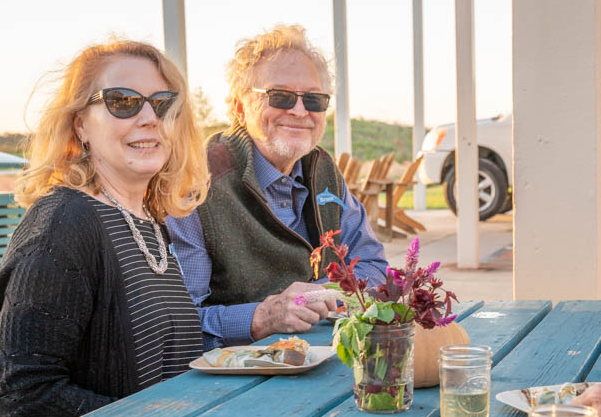
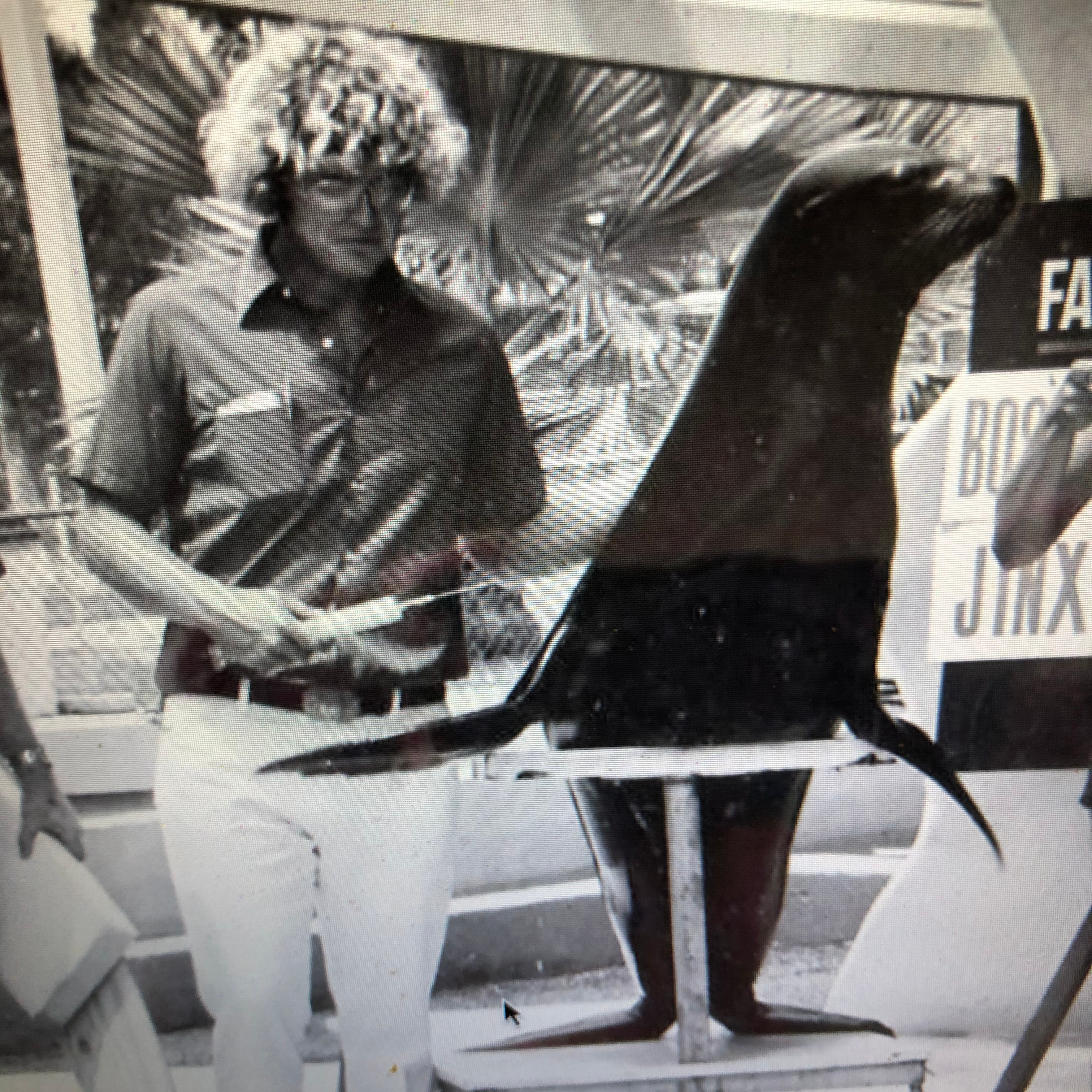
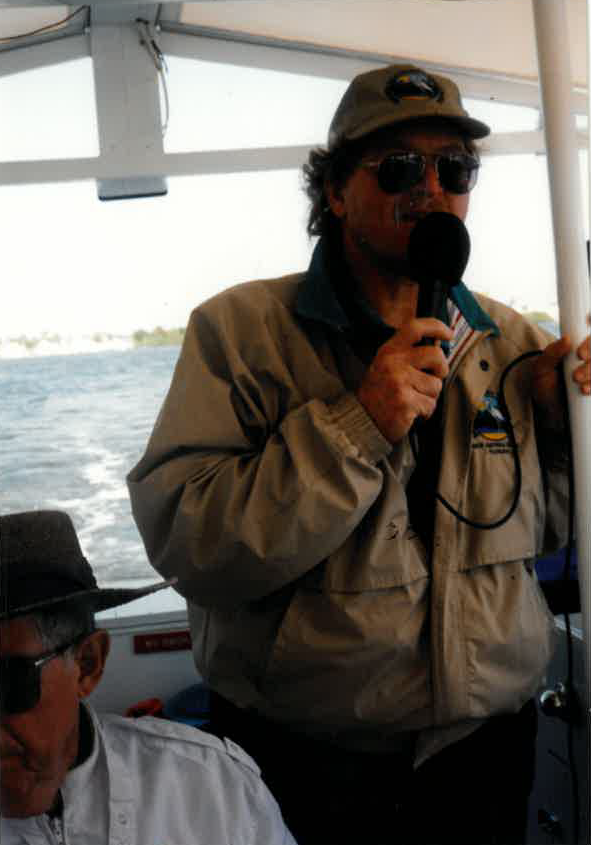
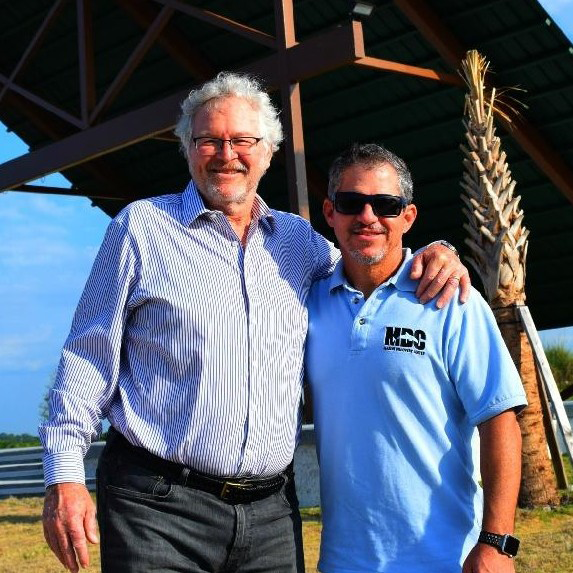
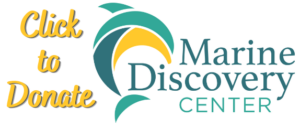
Follow Us!